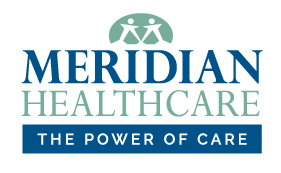What Is a Collaborative Care Model, and How Does It Improve Patient Outcomes?
Your health is important, and you deserve the best care possible.
Great care addresses both your physical and mental health needs. Too often, traditional treatment plans and health care models let mental health care fall by the wayside – but this is a mistake. Our mental health and our physical health impact one another, so when you neglect one, you’re really neglecting both.
The good news is that evolving collaborative care models address both physical and behavioral healthcare needs, improving the quality of care as a result.
What Is the Collaborative Care Model?
The traditional healthcare model has healthcare professionals operating alone in separate service-specific practices. There’s often little communication or information sharing between clinicians even though they are caring for the same patient. Collaborative care models (CoMC) are the opposite. In these types of models, healthcare professionals come together to discuss, plan, and implement treatment for their patients.
The goal of collaborative care is to bring together a team of health professionals with different specialties to provide whole-person medical care. These team-based care plans address both physical and mental health conditions and give patients access to a variety of health specialists who can help them find inventive and complete solutions.
Differences Between Collaborative Care Models
There are a few types of care models that fall under the collaborative care umbrella. The similarity between these models of care means that sometimes the terms are used interchangeably – though there are subtle differences.
Integrated Care
Integrated care involves the most collaboration, where the primary care physicians (PCP), behavioral health professionals, and other medical providers all belong to the same practice.
Integrated care means that your care management is coordinated between your care team without referrals or waiting for medical information to transfer. Oftentimes, it means that you can receive a variety of patient care services at one single location.
Behavioral health providers are a fully integrated part of the primary care setting and work with primary care providers actively to address a patient’s medical conditions.
Co-Located Care
When it comes to co-located care, you can still receive in-person healthcare services from a variety of healthcare professionals at one facility, but they are not working for the same practice.
In this care approach, mental health providers maintain their psychiatry practice and may collaborate with other doctors (but it is a less official partnership).
Coordinated Care
Coordinated care is the loosest term and refers to some level of cooperation between different healthcare professionals. This care model has a minimum amount of collaboration (and often involves a referral for things like a psychiatric consultant) and less agile information sharing between healthcare providers.
How a Collaborative Care Model Works
When you have a fully integrated and collaborative care team, your primary care doctor acts as the lead care manager. Together with behavioral health care managers (BHCMs), consulting psychiatrists, and other healthcare professionals, the team develops a care plan that addresses any physical and behavioral health conditions, all while sharing information about patient progress.
Who Makes Up a Collaborative Care Team?
The most basic model of a collaborative care team combines primary care practices and mental health services. Your team will have a PCP, as well as a licensed behavioral health practitioner like a psychiatrist or counselor. However, many collaborative care environments offer a variety of health services to help patients find holistic, whole-person health.
Your care team could also consist of:
-
- Physical therapists
- Physician assistants
- Pharmacists
- Acupuncturists
- Social Workers
- Chiropractors
- Dieticians/Nutritionists
At the heart of this multidisciplinary team is, of course, the patient who is encouraged to take an active role in communicating their health needs with their doctors.
What Are the Benefits of Collaborative Care Models?
Having a care team that can operate together seamlessly results in a higher quality of care – and often for a cheaper price than traditional, separated healthcare models. Here are just a few of the benefits that come from collaborative care.
Improved Mental Health
Collaborative care models have proven to be an evidence-based method for improving mental health outcomes in patients across the board, with over 80 randomized controlled trials reporting that it’s effective in making mental health more accessible. Patients are more able to follow up on mental health services in a CoCM, with 75% of those in need of behavioral health services receiving behavioral health care within six months compared to 25% of patients in a traditional, separated system.
Mental health conditions also show more improvement under a CoCM. Clinical outcomes from nine of the studies showed that collaborative interventions led to more effective treatment of anxiety disorders, substance use disorders, and other mental illnesses. Initiatives to integrate social workers into CoCM further reduce mental health issues like substance use disorder.
Options for More Holistic and Innovative Treatments
Collaborating with a team of multidisciplinary healthcare professionals also allows for more innovative treatment plans. In recent decades, an over-reliance on pain medications to manage chronic conditions has caused unprecedented use of prescription painkillers, which are extremely addictive and lead to a substance use disorder if abused. It’s estimated that over nine million Americans are addicted to opioids, making this issue a major health crisis.
Whole-person approaches to health – that incorporate alternative medical practices like acupuncture and chiropractic care – can reduce the need for addictive painkillers while providing pain relief. Acupuncture can reduce migraines, help cancer patients manage painful side effects, reduce menopausal hot flashes, and more. CoCMs can provide treatment plans that relieve pain without having to rely on painkillers and teach patients self-soothing pain management techniques so that they can avoid the risk of addiction and the negative side effects that come along with opioids.
Lowered Health Care Costs
The cost of healthcare services has reached a point where nearly half of the U.S. population struggles to afford healthcare. More and more, people are delaying necessary visits to the doctor and preventative check-ups due to financial issues.
Collaborative care models help make physical and mental health services less expensive. Patients receiving collaborative care have seen a significant decrease in both inpatient and outpatient costs. Streamlining information processes cuts down on overhead costs, and making preventative, whole-person healthcare leads to less need for costly emergency health services, lowering the overall cost of medical treatment.
Better Outcomes for a Diverse Patient Population
The lower cost of CoCMs makes mental health care more accessible for low-income patients. According to the American Psychiatric Association, collaborative care models were more cost-effective than usual primary care and mental health services – making it more accessible to families that might otherwise struggle to afford care. Additionally, depending on the healthcare provider, some collaborative care treatments may be covered by Medicaid or Medicare.
CoCMs better serve a larger patient base than traditional siloed healthcare models. Racial and ethnic minorities have historically been less able to access mental health services, but systematic review shows that collaborative care models have been effective in serving more racial and ethnic minorities while reducing their rates of depression. CoCMs address this disparity not only by being more accessible – but also by offering better patient outcomes overall.
Higher Quality Care
Patients who receive care from a collaborative team of healthcare professionals report higher satisfaction rates than those enrolled in traditional healthcare models. Since mental health and physical health are related, a care system that addresses both leads to better health outcomes. Not only that, but the larger variety of services makes patients feel more in control of their health choices.
But, patients aren’t the only ones who feel more satisfied within a CoCm. Healthcare professionals also report higher levels of satisfaction and lower levels of burnout. When healthcare professionals collaborate on caseloads together, it lessens the stress they feel. 43% of clinicians working in a non-collaborative environment reported experiencing burnout. When medical staff feel burnt out, they’re less able to provide care to their patients.
With the stress of caseloads distributed across a care team, medical professionals are more able to provide individualized, quality care. This leads to better outcomes for patients, including better chronic condition management, decreased rates of infections associated with healthcare, and less need for inpatient care services.
Better Communication
CoCMs also make care much more efficient – especially fully integrated models. When seeing doctors in different practices, information sharing becomes a complicated and time-consuming process. HIPAA compliance slows and complicates the process of sharing patient information between practices, often affecting your access to necessary healthcare. Not only that but electronic communications may cause important communications to be lost or unread.
When your care team works for the same practice, especially when housed in the same building, it allows for more organic and agile communication between doctors. Your care team knows each other personally and they interact regularly. This means that none of your important health information is buried in an inbox. Better communication leads to more effective care management and clarity.
Not only that, but collaborative care seeks to involve patient input. You are at the heart of your care team – meaning that doctors actively seek your opinion of medical treatment options and what works for you.
Better Relationships
CoCMs lead to better relationships, which also increases the efficacy of care. Face-to-face, regular interaction among your healthcare providers creates strong personal relationships and teamwork.
The increased communication between patients and doctors also leads to stronger patient-doctor relationships. This increased trust allows you to work with your care team regarding sensitive information and what is – or isn’t – working to see the best results possible.
Accountability Among Care Team
With improved communication and relationships, healthcare providers support one another while keeping one another accountable in meeting a patient’s measurement-based care goals.
Your primary care provider acts as an advocate on your behalf, making sure that your treatment is working and that every member of the care team is working toward improving your health. You’re less likely to have important elements of your care plan fall through the cracks when you have more hands on deck and a collaborative team of professionals regularly checking with one another on the progress of your health.
Find Dedicated Integrated Healthcare
You shouldn’t have to compromise when it comes to your health. Everyone deserves affordable and high-quality healthcare – and the collaborative care model looks to provide just that.
If you and your family are looking for whole-person wellness, then Meridian HealthCare is here for you. We follow a fully integrated collaborative care model. Our staff consists of expert mental health professionals, primary care physicians, acupuncturists, and chiropractors – all working together to provide the highest quality of care to the citizens of Mahoning Valley and beyond. Don’t wait to get the care you need – schedule an appointment today.





